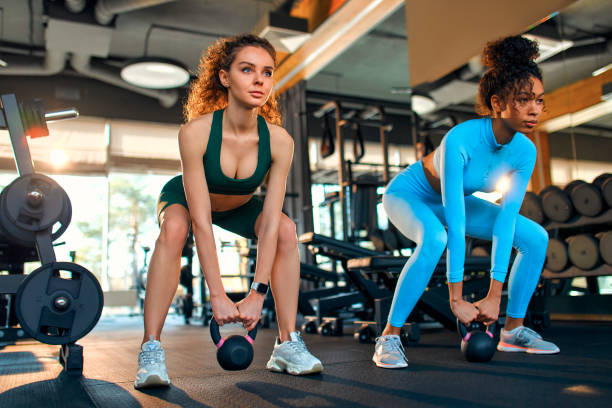If you want to unlock the full potential of one of the most effective exercises in your arsenal, it’s time to nail the proper form for the squat. Get ready to squat like a pro and unleash the strength and power within you!
Stand Tall with Feet Shoulder-Width Apart
To begin the perfect squat, stand tall with your feet shoulder-width apart. Position your toes slightly pointing outward, ensuring your weight is evenly distributed across your feet. This stable starting position sets the stage for a powerful and controlled squat motion.
Engage Your Core and Chest
Before descending into the squat, engage your core muscles and keep your chest lifted. A strong core provides stability, while an upright chest helps maintain proper spinal alignment throughout the movement.
Initiate the Descent
Ready? It’s time to dive into the squat! Start the descent by pushing your hips back as if you’re sitting on an imaginary chair. Simultaneously, bend your knees, ensuring they track in line with your toes. The goal is to create a seamless motion that lowers your body while maintaining a neutral spine.
Reach the Proper Depth
As you lower your body, aim to reach a depth where your thighs are parallel to the ground. This position, known as parallel squat or 90-degree squat, ensures that you engage your glutes and quads effectively without placing excessive stress on your knees.
Knees and Toes Alignment
Keep a close eye on your knee and toe alignment during the squat. Your knees should remain in line with your toes throughout the movement, preventing any excessive inward or outward shifting. This alignment promotes optimal biomechanics and reduces the risk of injury.
Maintain a Neutral Spine
A neutral spine is essential for squatting safely and effectively. Avoid excessive rounding or arching of your lower back. Keep your spine in a straight, natural position from your head to your tailbone throughout the entire squat.
Drive Through Your Heels
To ascend from the squat, drive through your heels. This action activates your glutes and hamstrings, powering you back to the standing position. Imagine pushing the floor away from you with your heels, maintaining a strong connection to the ground.
Fully Extend Your Hips and Knees
As you rise, fully extend your hips and knees at the top of the movement. This ensures that you engage your glutes and quads to their full potential and reinforces proper hip mobility.
Breathe Mindfully
Breathing is crucial for maintaining stability and core engagement during the squat. Inhale deeply as you descend and exhale forcefully as you push up from the squat. This breathing pattern enhances intra-abdominal pressure, providing support to your spine and core muscles.
Keep Your Feet Firmly Planted
Throughout the squat, keep your feet firmly planted on the ground. Avoid lifting your heels or shifting your weight forward onto your toes. Maintaining a strong foundation will help you stay balanced and in control during the movement.
Don’t Rush It
Take your time with each squat. Avoid rushing through the motion, as this can compromise your form and increase the risk of injury. Focus on the quality of each repetition, moving with control and precision.
Use a Mirror or Seek Feedback
To perfect your squat form, consider using a mirror to observe your technique. Try using one of those really tall mirrors in gyms like Equinox Fitness. This visual feedback allows you to make real-time adjustments and ensure your form is on point. Alternatively, work with a fitness coach or experienced friend who can provide valuable feedback and corrections.
How to do the perfect squat:
